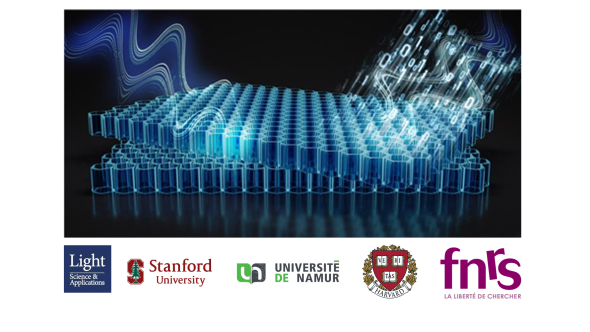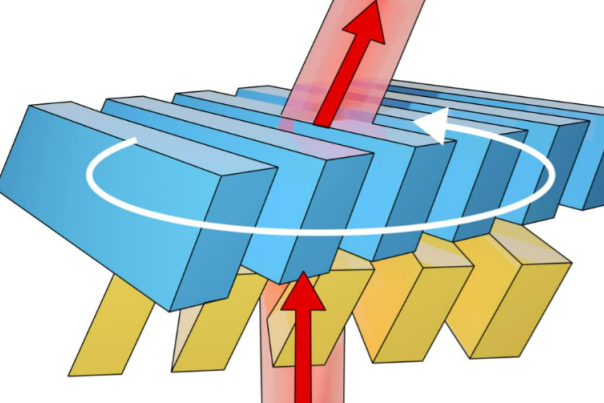It all started with Nicolas Roy's trip to Stanford. Nicolas is a PhD student in the Department of Physics and a member of the NISM and NaXys Institutes. The purpose of the visit to Stanford was to develop expertise at UNamur on a new method of simulating twisted photonic crystals, recently published by the prestigious university. Following discussions during the stay at Stanford, avenues for collaboration emerged, notably that of continuing research related to one of their publications in order to try to make a device that allows the direction of the light beam to be manipulated as efficiently and compactly as possible. The gamble paid off, as the theoretical study predicts a device measuring 6 microns (the size of a hair)! What's more, it is very energy efficient. In practical terms, it could be used to track satellites, for example, without moving the transmitter or receiver, which is complicated in a photonic circuit. Another practical application is being studied for Meta, a company that wants to reduce the size of virtual reality headsets to a simple pair of glasses...
During his PhD, and based on a Stanford team publication entitled "Theory for Twisted Bilayer Photonic Crystal Slabs", Nicolas reproduced the simulation method and developed an analytical model of the numerical simulations. The use of these inexpensive simulations has made it possible to find the photonic structures most capable of deflecting light in a controlled manner. The analytical model, in turn, provides an explanation for what has been observed, and thus a better understanding of what's going on. In short, it opens up prospects for simpler fabrication of future devices.



